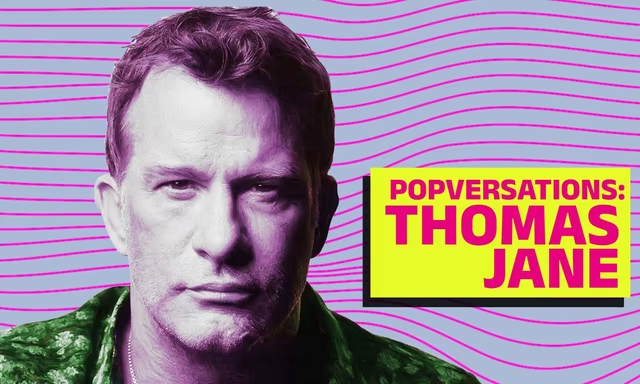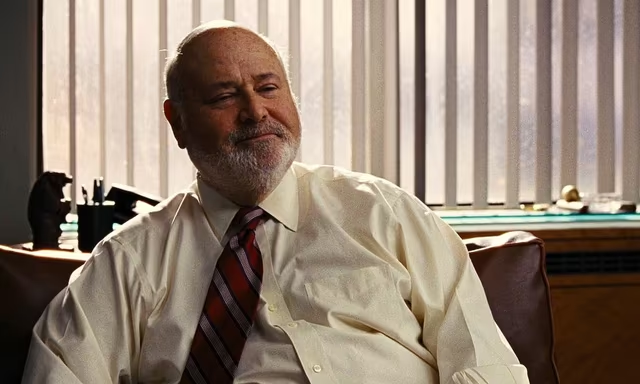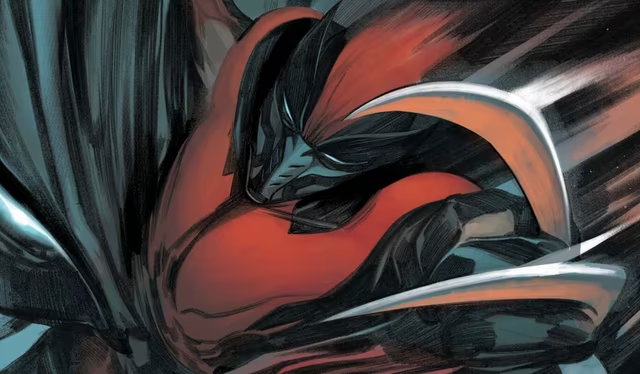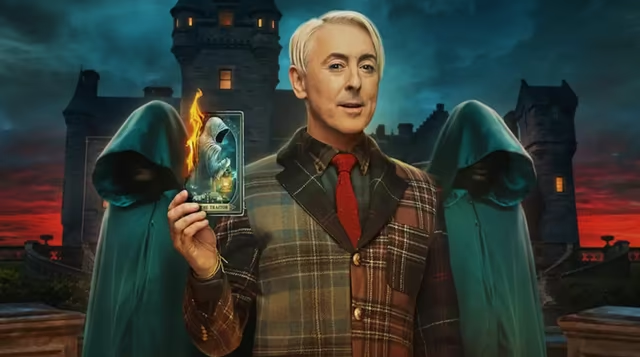If you click on a link and make a purchase we may receive a small commission. Read our editorial policy.
Does Best of 2000 AD live up to the hype?
The first volume in the six-book series promises to convince newcomers why the iconic British anthology remains relevant, but does it succeed?

The long-awaited release of Best of 2000 AD Volume 1 is a little over a month away at this point, promising the “ultimate mixtape” culled from the back catalog of the iconic British weekly anthology with the intent of convincing newcomers and lapsed readers to step into the fold of the title that describes itself proudly as the Galaxy’s Greatest Comic. But… does it live up to the hype?
I should out myself upfront; I’m a big 2000 AD fan. It’s something that I grew up with, and returned to across the decades ever since; it’s a title that’s been home to some of my favorite comics ever – I see you, Zombo, Zenith, and (of course) Judge Dredd – and certainly some of the best creators who’ve ever worked in the medium, in my opinion. It’s also one that comes with no small amount of history and legacy to be lived up to, which is only fitting considering it celebrates its 45th birthday this year. The very idea of even selecting what goes into a “Best of 2000 AD” collection is a daunting one to me. As excited as I am for the prospect of new readers discovering 2000 AD as a result of this six-volume series, I have to admit that I was more than a little nervous: what if they chose the wrong material? What if the result was something that didn’t properly communicate the strengths of the series? What if – gulp – the Best of 2000 AD just wasn’t very good?
I’ll just cut to the chase now: I didn’t have anything to worry about.

There’s a dual danger when it comes to selecting material for anything with the words 'best of' in its title. Firstly, there’s the possibility that the choices will be too niche, reflecting an obsessive’s view of the subject – one particular episode of a given storyline or character that is judged to be the quintessential story, or one obscure b-side that someone believes is the heart to a band’s entire back catalog. And then, that the end result will be too diffuse and varied as to be useless as a primer for everything else that’s not been included. (Something that could be a very real problem for 2000 AD, with 45 years’ worth of weekly comics anthology to compress into a limited space.)
Judging from the first volume, Best of 2000 AD manages to sidestep both. The first volume offers seven different stories, drawn from the '80s, ‘90s, '00s, and '10s, from a variety of creators both known and obscure to US audiences, told in different tones, genres, and with different intents, yet it holds together surprisingly well. There’s an emphasis not only on 2000 AD history – in addition to two Judge Dredd stories, both of which are excellent if very different in terms of tone, there’s the complete first storyline of Alan Moore and Ian Gibson’s The Ballad of Halo Jones, arguably one of the landmark works of Moore’s early career, as well as Alan Grant and Arthur Ranson’s Anderson, PSI Division: Shamballa, which might be the highpoint of the entire decades-long run of the beloved Judge Dredd spin-off – but on its contemporary publishing slate, with the first installment of Dan Abnett and INJ Culbard’s Brink also included.

If there’s a thematic connection to be found beyond, simply the fact that they’re all smart science fiction-inflected stories, there’s an argument to be made that the first volume showcases some of 2000 AD’s most high-profile female characters, with the afore-mentioned Halo Jones and Cassandra Anderson sharing space with Brink’s Bridget Kurtis. That feels a little reductive, perhaps; maybe more could be said about the different ways that each of the stories in the collection address the need to fill the emotional and spiritual void of living in dystopian futures – a central theme of Brink, The Ballad of Halo Jones, and Shamballa, and something arguably addressing in an unexpected way by the Dredd short that closes out the volume. (A short illustrated by Mad Max: Fury Road designer and co-writer Brendan McCarthy and Gorillaz co-creator Jamie Hewlett, working in rare collaboration.)
Putting it that way downplays the joy to be found in the volume, though. That Dredd short is a silly, wonderful story written by the late Alan Grant, and it appears right beside a one-page D.R. & Quinch’s Agony Page short by Alan Davis and Jamie Delano that is gloriously, riotously dumb, and shamelessly amusing. Even Brink – a strip that could best be described, at least at its beginning, as HBO’s True Detective as reimagined by the Ridley Scott that made Alien and Blade Runner – has no shortage of sly, dark comedy nestled amongst its existential dread detective story. (Unlike the other stories in the first volume, Brink is the start of a serialized story that will run through the first few volumes of the six-part series; it’s a clever move, with enough of a hook in this first installment to bring readers back next time.)
Fittingly, though, it might be the Judge Dredd story that Volume 1 begins with that’s the best thing in the entire book. 'Mutie Block,' by character co-creator John Wagner and artist Kev Walker (known to American fans for his Marvel work over the past decade or so), isn’t just a perfect distillation of the blend of action/adventure storytelling and political satire that the strip has perfected across its run, it’s also a story strong enough to stand on its own even for those unfamiliar with Dredd and with no interest in delving deeper into his deep and complex mythology. What starts as a metaphorical critique of British immigration policies ends in what might be the closest thing the Judge Dredd comic has ever come to the 2012 Dredd movie, with a suitably dramatic, violent, and wry climax that demonstrates Wagner’s almost unmatched skill as a writer. It’s a tour de force, and it speaks to Best of 2000 AD’s overall strength that it doesn’t entirely overshadow everything that follows.

For almost half a century, 2000 AD has been at the forefront of British comics, as well as science fiction comic books in general; it’s made the careers of countless creators who would go on to dominate the American comic book industry – Alan Moore, Grant Morrison, Dave Gibbons, Brian Bolland, Al Ewing, Peter Milligan, and Jock, amongst others – and laid down the groundwork for all manner of further comic books that have been graciously received across the world. Ultimately, the first volume of Best of 2000 AD offers newcomers with a good sense of why that is the case… but, even more excitingly, it leaves more than enough for readers to go off and discover on their own afterwards, whether in the subsequent five Best of volumes, or in separate 2000 AD collections. As an introduction, that’s all that could be hoped for.
Best of 2000 AD Volume 1 will be released in September, and is available for pre-order now.
Read about the history of trying to break 2000 AD for an American audience, ahead of the release of the first volume of the new series.
Follow Popverse for upcoming event coverage and news
Find out how we conduct our review by reading our review policy
Let Popverse be your tour guide through the wilderness of pop culture
Sign in and let us help you find your new favorite thing.
















Comments
Want to join the discussion? Please activate your account first.
Visit Reedpop ID if you need to resend the confirmation email.